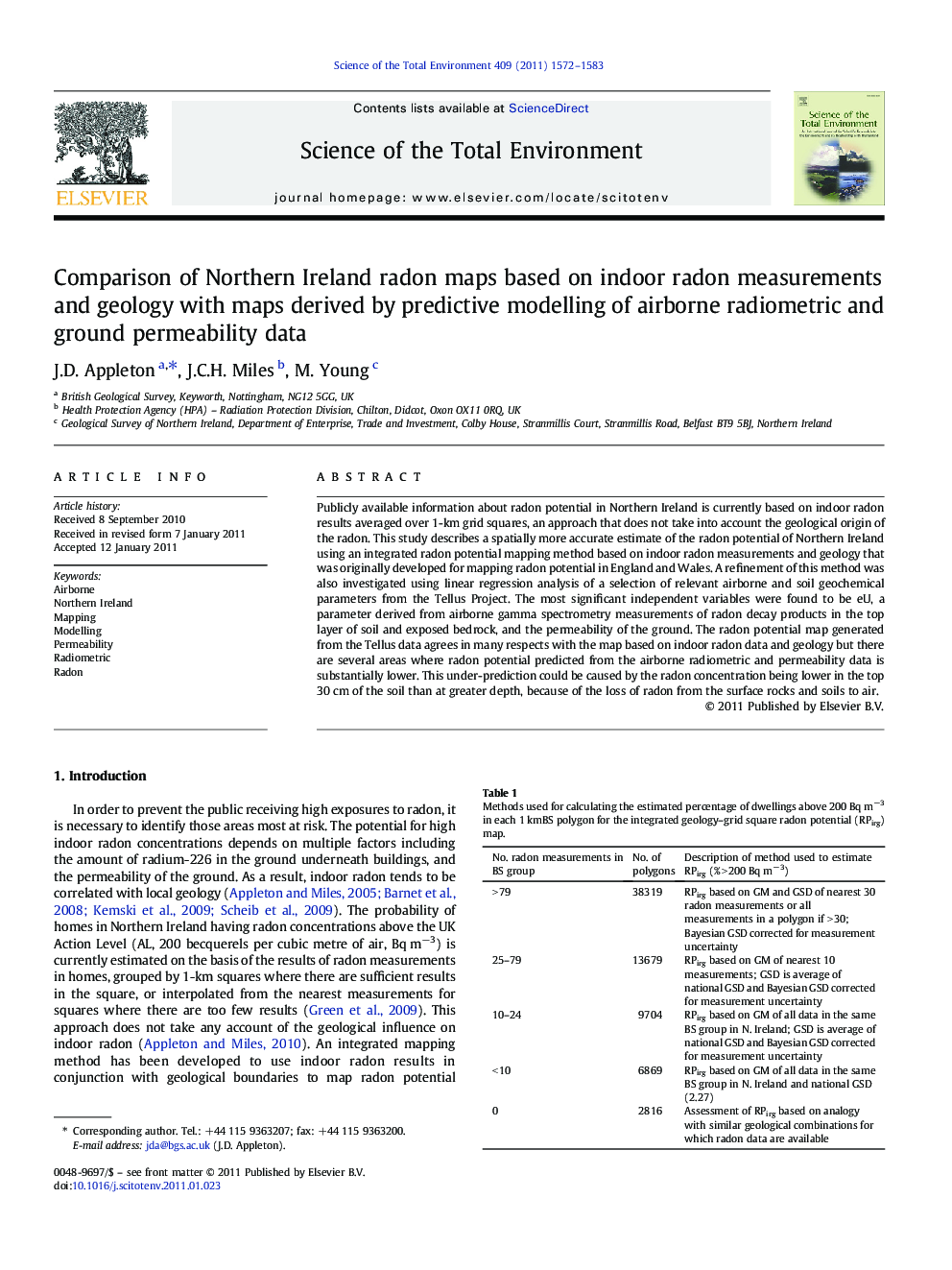| Article ID | Journal | Published Year | Pages | File Type |
|---|---|---|---|---|
| 4430867 | Science of The Total Environment | 2011 | 12 Pages |
Publicly available information about radon potential in Northern Ireland is currently based on indoor radon results averaged over 1-km grid squares, an approach that does not take into account the geological origin of the radon. This study describes a spatially more accurate estimate of the radon potential of Northern Ireland using an integrated radon potential mapping method based on indoor radon measurements and geology that was originally developed for mapping radon potential in England and Wales. A refinement of this method was also investigated using linear regression analysis of a selection of relevant airborne and soil geochemical parameters from the Tellus Project. The most significant independent variables were found to be eU, a parameter derived from airborne gamma spectrometry measurements of radon decay products in the top layer of soil and exposed bedrock, and the permeability of the ground. The radon potential map generated from the Tellus data agrees in many respects with the map based on indoor radon data and geology but there are several areas where radon potential predicted from the airborne radiometric and permeability data is substantially lower. This under-prediction could be caused by the radon concentration being lower in the top 30 cm of the soil than at greater depth, because of the loss of radon from the surface rocks and soils to air.
Research Highlights► A new radon map for Northern Ireland is derived from indoor radon and geology data. ► Linear regression used to map radon potential (RP) from airborne and soil data. ► Gamma-ray spectrometry estimated U is the most significant independent variable. ► RP maps based on separate models for distinct geological terrains are most effective. ► Under-prediction of RP may be caused by loss of radon from surface rocks and soils.
